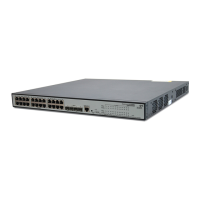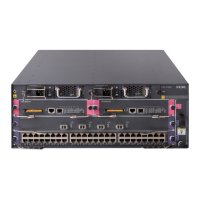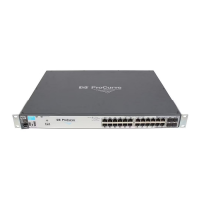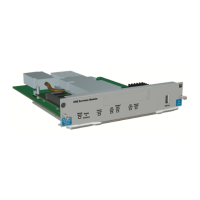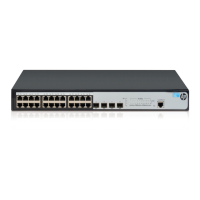259
Routing configuration
NOTE:
The term
router
in this document refers to a switch supporting routing function.
Upon receiving a packet, a router determines the optimal route based on the destination address and
forwards the packet to the next router in the path. When the packet reaches the last router, it then
forwards the packet to the destination host.
Routing table
Routers forward packets through a routing table. Each entry in the table specifies a physical interface that
packets destined for a certain address should go out to reach the next hop—the next router—or the
directly connected destination.
Routes in a routing table fall into three categories by origin:
Direct routes—Routes discovered by data link protocols, also known as “interface routes.”
Static routes—Routes that are manually configured.
Dynamic routes—Routes that are discovered dynamically by routing protocols.
A route entry has the following key items:
Destination IP address—Destination IP address or destination network.
Mask—Specifies, together with the destination address, the address of the destination network.
Outbound interface—Specifies the interface through which a matching IP packet is to be
forwarded.
Next hop—Specifies the address of the next hop router on the path.
Preference of the route—Routes to the same destination can be found by various routing protocols
or manually configured; routing protocols and static routes are assigned different preferences. The
route with the highest preference (the smallest value) is selected as the optimal route.
Static route
Static routes are manually configured. If a network’s topology is simple, you only need to configure static
routes for the network to work properly. The proper configuration and usage of static routes can improve
network performance and ensure bandwidth for important network applications.
The disadvantage of using static routes is that they cannot adapt to network topology changes. If a fault
or a topological change occurs in the network, the routes will be unreachable. The network administrator
has to modify the static routes manually.
While configuring a static route, specify either the output interface or the next hop address as needed.
The next hop address cannot be a local interface IP address; otherwise, the route configuration will not
take effect.
It is necessary to identify next hop addresses for all route entries because the router needs to use the next
hop address of a matching entry to resolve the corresponding link layer address.
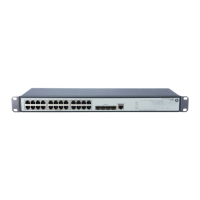
